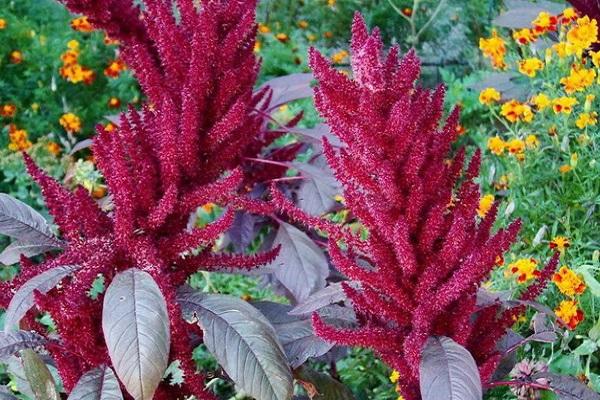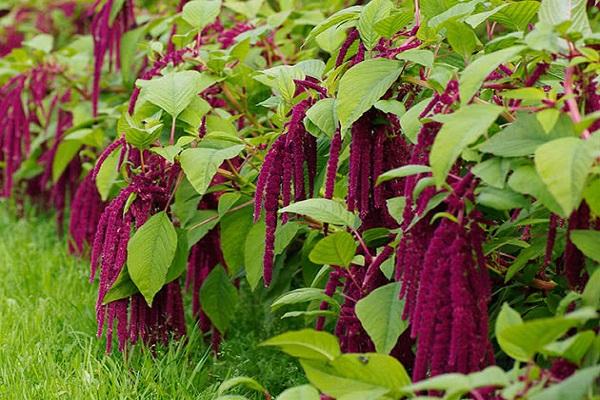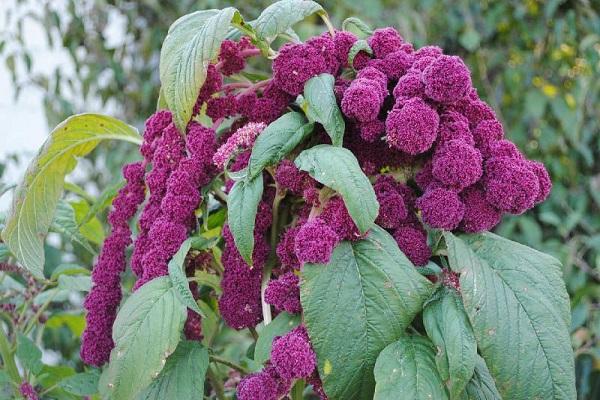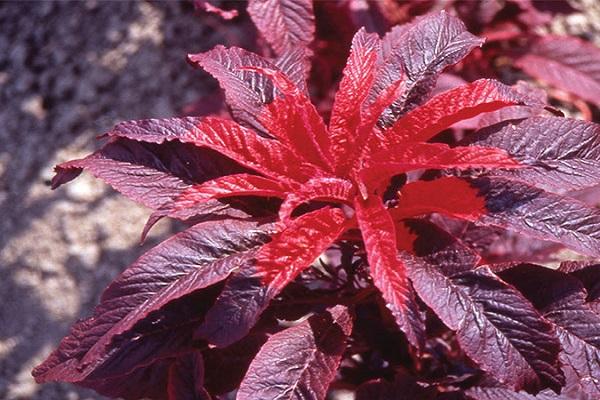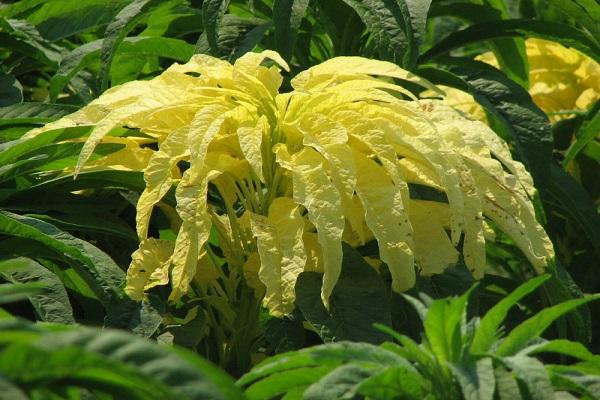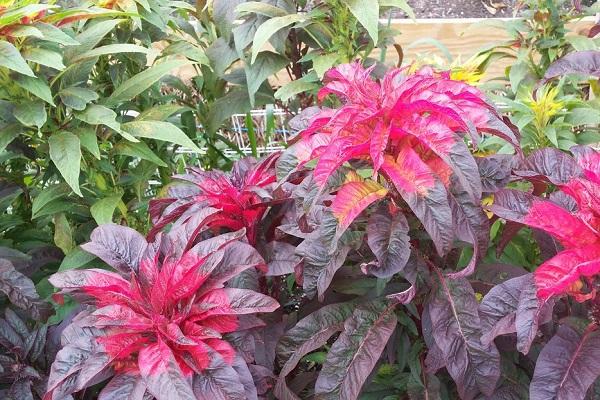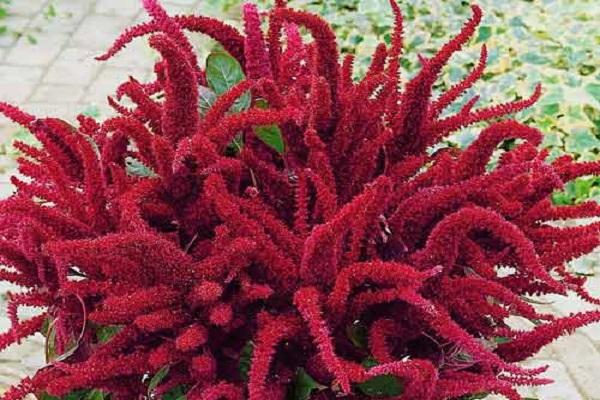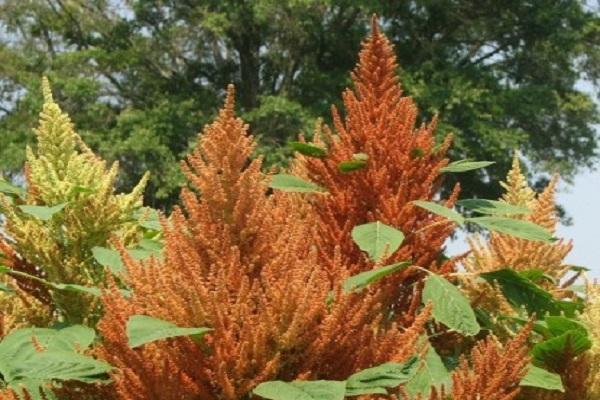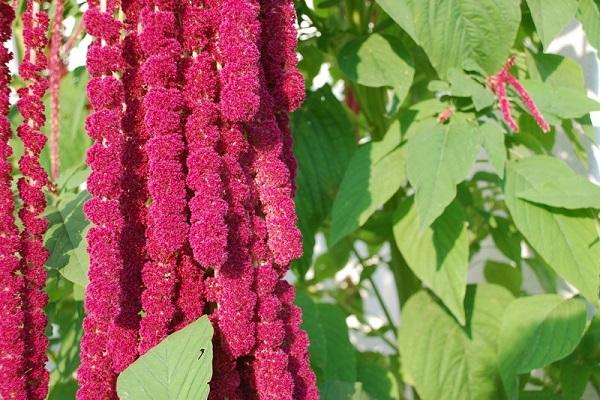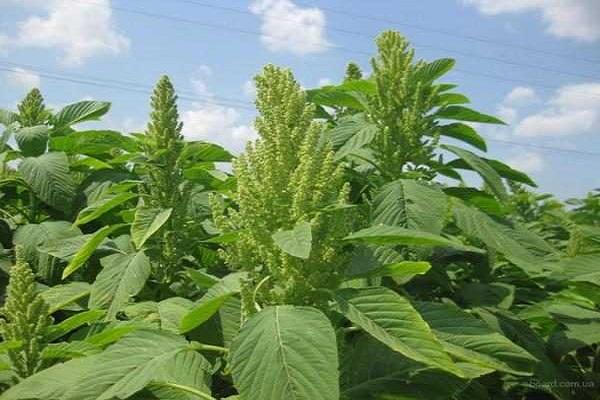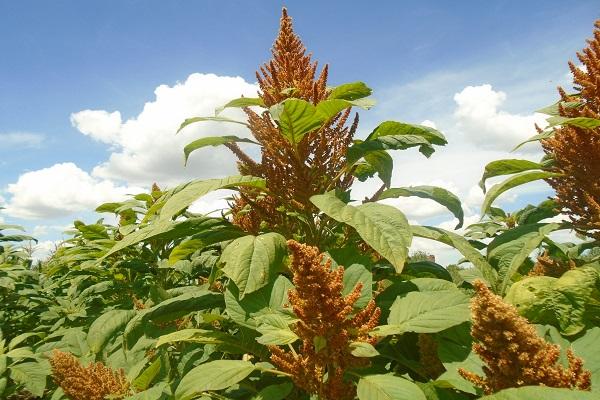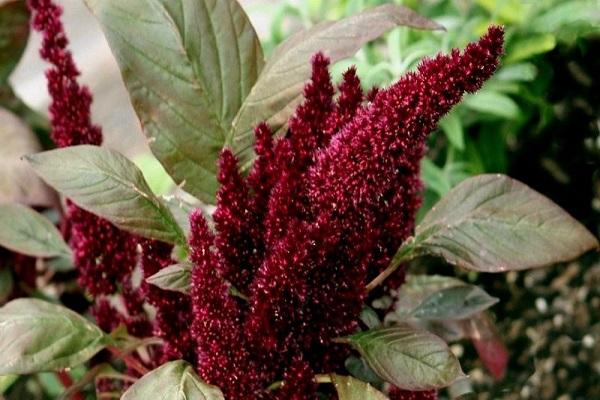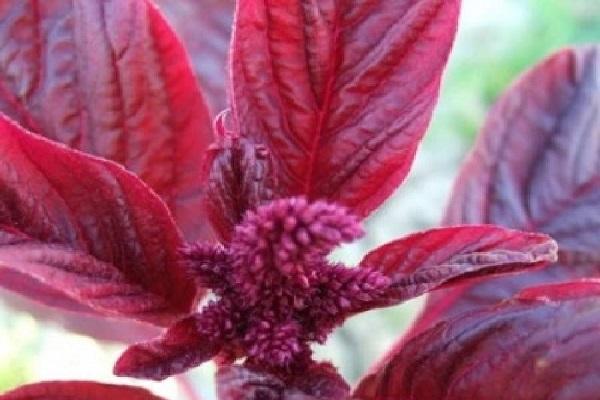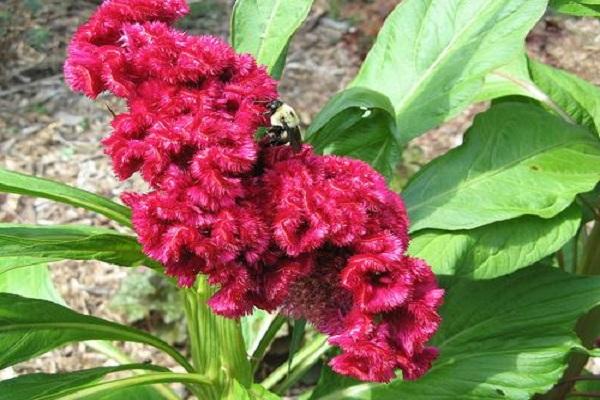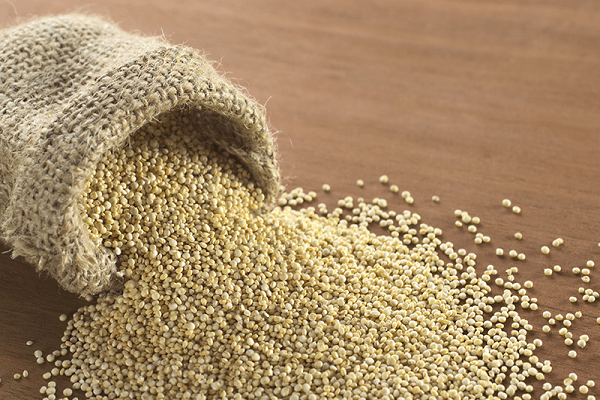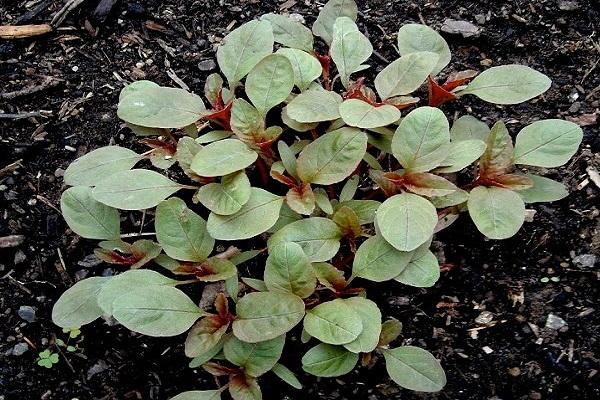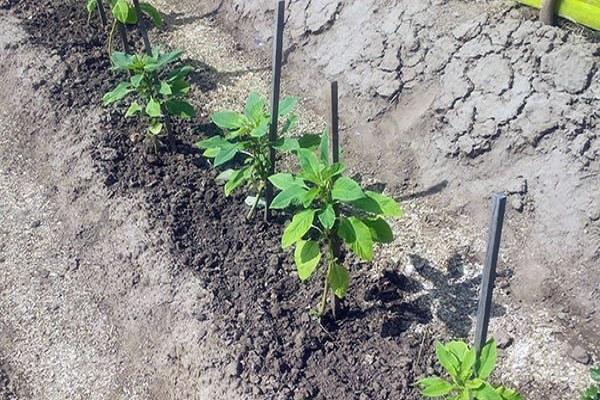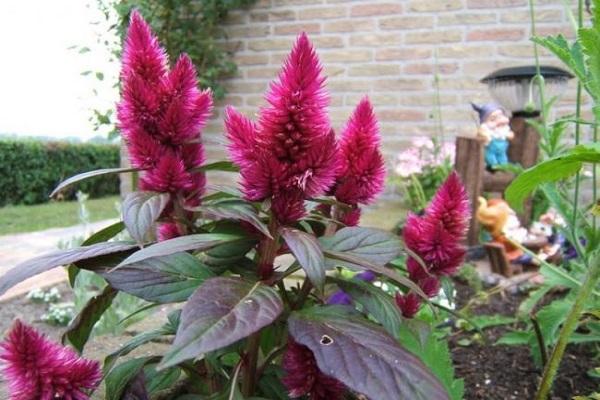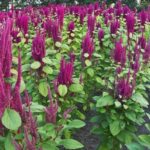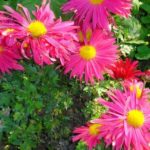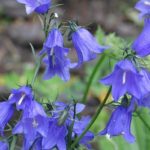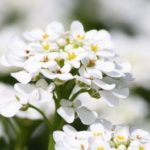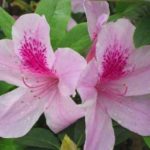People grow everything that is beautiful and also useful. Amaranth was one of these plants. In its unchanged form, it is a weed called upturned acorn. Every gardener has at least once encountered so-called “soldiers” in his garden plot; these are nothing more than amaranth. Today, breeders have developed a great variety of varieties and types of amaranth. They attract attention with their beauty and unusualness, and besides, this plant is useful and fruitfully used in cooking. What kind of unique species is this and what species are known today.
- Varietal diversity of amaranth
- Amaranth caudate
- Rotschwanz
- Grunschwartz
- Amaranth Green Tails
- Raspberry beads
- Avalanche
- Green torch
- Dreadlox
- Amaranth tricolor and bicolor
- Illuminations
- Glamorous glitter
- Molten fire
- Early Splender
- Aurora
- Splendence perfecta
- Molten Fire
- Bicolor
- Amaranth paniculata
- Oeschberg
- Twins
- Bronze
- Openwork
- Red Cathedral
- Bronze Age
- Red torch
- Amaranth fodder
- Kinelsky 254
- Giant
- Lera
- Kharkovsky-1
- Aztec
- Kizlyarets
- Cherry jam
- Dark amaranth (sad)
- White amaranth - white amaranth
- Red amaranth - Amaranthus Red
- Upturned or spiked amaranth - Amaranthus retroflexus
- Types of decorative amaranths
- Cherry velvet
- Vegetable amaranth
- Indoor amaranth
- How to plant and grow a flower in the garden
- Planting methods and technology
- Seeds
- Seedlings
- How to care for culture
- Reproduction methods
Varietal diversity of amaranth
In the world flora, common amaranth is represented by more than sixty species. There are annual and perennial crops that are resistant to even the most severe frosts and resistant to any pest. Growing a plant is simple and not troublesome. With such a great variety of varieties and species, you can get confused and buy fodder or vegetable, instead of decorative. Which varieties are the most popular and in demand and in what quality.
Amaranth caudate
A representative of this variety is a rather powerful herbaceous plant, reaching a height of 1.5 m or more. It has an erect thick stem and large leaves that hang slightly to the ground. The leaves are often purple, less often green. The root system is taprooted, with a long central root going 50-70 cm deep. Such roots are designed to support a huge bush and prevent it from breaking under its own weight and in bad weather.
At the beginning of summer, caudate amaranth produces a peduncle that resembles a long cord or tail, for which it is nicknamed caudate.Inflorescences are densely collected small flowers strung on a long stalk. The length of one cord sometimes reaches half a meter, or even more. Depending on the variety they have different colors.
The most common varieties of the tailed representative are the following.
Rotschwanz
The plant is erect, up to 70 cm high. A pair of bushes occupies a fairly large space. The leaves are light green with whitish, distinct veins, corrugated to the touch. The inflorescences are collected in a broom. In one inflorescence there are up to 50 individual cords up to 30 cm long. The color palette of the panicle is usually red, burgundy, with a more saturated color at the base.
Important! Individual rope-inflorescences can hang down to the ground and even lie on it.
Grunschwartz
In terms of its botanical characteristics, it resembles the Rotshvanz variety, but has bright green inflorescences. The duet will fit perfectly into the decoration of any flower bed, as they are almost the same height and diameter. These tails or flagella are a favorite material for florists to create winter arrangements of dried flowers.
Amaranth Green Tails
Tall plant, up to 80 cm. A rare variety of green amaranth. All parts are green: leaves, inflorescences, flowers, stem. But it is beautiful because the length of the hanging panicles or its individual elements reaches 80 cm. It looks great as a stand-alone planting or as a decoration for an artificial fence or as a hedge. Powerful bushes will not allow any wind to get into the garden.
Raspberry beads
The meter-long stems of this variety have a red, almost crimson color, as do the inflorescences, which looks impressive framed by green leaves.The bush is capable of growing strongly to the sides, so it is planted in the flowerbed in the singular.
The inflorescences hang downwards to a length of 1 m. They are beautiful when cut fresh and can decorate any winter composition for floor vases.
Avalanche
Beautiful long purple tails can be seen from early summer until late autumn. Of interest are the individual inflorescences, which are long threads with bunched flowers, strung on a peduncle like beads. The Avalanche variety loves space and plenty of light.
Green torch
An annual herbaceous plant up to 40 cm high. It has green, ovoid leaves and an erect, powerful stem. Heat-loving amaranth is poorly resistant to low temperatures. Flowering can be observed from June until frost, when it dies.
The inflorescences or tails grow upward, rather than hanging down, as is customary for caudate amaranth. The panicles are represented by individual thickened peduncles. The color is bright green.
Dreadlox
This variety of amaranth is perhaps the most bizarre. It can be classified as paniculate and caudate. The panicle inflorescence is of interest. Its individual flagella resemble dreadlocks, an African hairstyle. There are balls of small burgundy flowers strung on a thin stalk. And in combination with bright greenery, the plant will not leave any gardener on the sidelines.
Amaranth tricolor and bicolor
Special types of annual amaranth are two- and three-colored. These varieties are valued by gardeners not for their flowering, like the previous representative, but for the interesting color of the leaves, which combines two or more contrasting colors at once. Moreover, different shades predominate on one root at once.
The leaves are elongated, can be wavy, and are red, yellow and green at the same time.These varieties usually belong to medium-height varieties, reaching 60-70 cm, but there are specimens 1.5 m tall.
Illuminations
The most attractive variety is Illumination. He is perhaps the most beloved among flower growers. The decorative effect is created by the play of colors on one leaf. Red, yellow, green shades of one leaf blade, as if someone spilled three bottles of paint at once.
The height does not exceed 70 cm, the shape is pyramidal, that is, widened at the base and narrowed at the top. Multi-colored leaves-petals appear on young shoots. At the beginning of summer they are less bright, and by autumn their pigment intensifies, and they acquire almost red-orange hues.
Glamorous glitter
The height of amaranth is no more than half a meter. The plant has a compact bush consisting of large leaves. The lower leaves are dark green with a burgundy edge. The top of the amaranth is painted in bright burgundy tones without greenery, which makes the flower look elegant and solemn.
Molten fire
Bicolor amaranth with decent size. The height of the bush can be up to 80 cm. The lower part of the foliage is colored brown, closer to chocolate color, and this composition is crowned with scarlet leaves. The leaves at the top are long in shape and have slightly wavy edges.
Early Splender
Amaranth Earley splender belongs to the genus of annuals. Thickened stems create a bush more than 1 m high. The two-color color plays with tones of burgundy and crimson, which are painted on the upper leaves, which are quite long, wriggling like snakes. The lower rows of foliage are dark burgundy with a bronze tint.
In the landscape, it is used as a central plant in any flower beds or in combination with petunias. Dense foliage is observed right down to the ground.
Aurora
Bicolor Aurora grows up to 1.2 m in height.The composition of yellow and green leaves will fit perfectly into any flower garden. The leaves are oblong, slightly wavy. The lower foliage is dark green, but the upper foliage is significantly different and presents a delicate sunny bouquet of yellow or cream tones. Looks beautiful in combination with Early Splender or Molten Fire varieties.
Splendence perfecta
Pyramid amaranth 1.2 m high. This representative of the tricolors requires freedom to show itself in all its glory. Amaranth leaves are valued because they are narrow and have long petioles. The lower layer of foliage is dark green with black spots, the top is presented in the form of a cluster of variegated, yellow-red leaves. The foliage looks elegant until late autumn.
Molten Fire
The original variety has a burgundy color on the bottom layers that fades to purple at the top. The outermost leaves are not completely colored in light colors, but only half.
Bicolor
The height of amaranth is slightly more than 80 cm and has a pyramidal structure. The foliage below is green, duller than that growing towards the top. The crown is dominated by a cluster of bright scarlet elongated, wavy leaves. Looks most elegant in sunny areas.
Amaranth paniculata
This variety of amaranth is popularly called crimson. It is significantly different from its brothers: tailed and multi-colored amaranth. It has an erect stem with a large number of side shoots, which is why it takes up a lot of space in the garden.
The inflorescence is presented in the form of a panicle, but erect. Only in some varieties the panicle droops down due to its heaviness. Amaranth growth varies from 35 cm to 150 cm. Depending on this, low, medium and tall plants are distinguished.
Varieties of paniculate amaranth.
Oeschberg
Tall paniculate amaranth of German selection, reaching a height of 1 m. The bush is simply huge, so it does not look good in combination with other varieties; it is better to grow it as a single decoration. The leaves are dark green, through which erect panicles with densely packed peduncles can be seen. The flowers are almost burgundy, becoming more saturated in color when illuminated.
Twins
Amaranth of this variety comes with green and burgundy inflorescences. Interesting in the shape of the peduncle. In the panicle itself, the central peduncle stands out significantly against the background of the side ones, reaching 30-40 cm, while the lateral ones are 5-10 cm. Small flowers are located very close to each other on the peduncles. The diameter of the central branch is up to 7 cm.
The panicle is erect, on a tall bush, up to 80 cm. The leaves are large green. The bush has a thickened stem to support a fairly branched plant.
Bronze
A giant plant, up to 2 m. The erect, thick stem is densely endowed with large green leaves. Gorgeous panicles rise through them. Flowering is long, from June until frost. It’s a wonderful sight when the ear of corn peeks out from under the snow.
We love gardeners in group flower beds, as well as cut flowers. Just add a couple of other flowers, and the bouquet is ready. The plant is unpretentious in care, loves space and plenty of light, which makes it seem golden.
Openwork
This variety of paniculate amaranth is similar to the Bronze variety. It has an erect stem up to 1.2 m in height, strong lateral shoots, green leaves and bronze-colored panicle inflorescences.
Red Cathedral
Tall amaranth, reaching more than 1.2 m. The leaves are bright green, against which beautiful paniculate inflorescences of burgundy color grow upward. This variety has a long flowering period. It is grown by seeds in the ground or through seedlings.
Bronze Age
The Bronze Age variety superficially resembles Openwork and Bronze, but the color palette of the panicle is several different shades. In fact, it is bronze, and in sunlight it becomes more saturated in color.
Red torch
The height of amaranth is 40 cm. The trunk is quite thick with powerful side branches. The inflorescence is collected in the center and is the end of the apex. The panicle is burgundy in color. Amaranth is heat-loving and does not tolerate even slight frosts. Fits beautifully in flowerbeds with low-growing flowers.
Amaranth fodder
Tall growth, strong lushness, abundance of green mass, huge inflorescences - this feature cannot be missed by livestock breeders. Amaranths are grown for the preparation of poultry feed mixtures and for silage for livestock. The harvest of fodder amaranth will always be abundant, and minimal financial costs make this plant in demand in livestock farming. The varieties bred today are distinguished by their ease of care and high yield.
Kinelsky 254
This variety is a product of the Volga Region Research Institute named after Konstantinov. The growing season lasts 100 days. Plant height is up to 1.6 m. It has a panicle inflorescence up to 60 cm long. The variety is drought- and frost-resistant. The shoots are weakly leafy. The yield of green mass is up to 30 tons per hectare in dry weather and up to 70 tons in favorable conditions. The seeds are used to prepare medicinal oil.
Giant
A fodder variety included in the State Register of the Russian Federation. The bush has dark green foliage and a yellow, less often red, panicle inflorescence. The size of the panicle can be described as follows: it does not fit into both hands, the length of the inflorescence is up to 42 cm. The bushiness and juiciness of the above-ground part is abundant, which is used in livestock farming to prepare silage for livestock feed. The yield of Giant amaranth is 15-20 t/ha. The height of the plant reaches almost 2 m.
Lera
Fodder amaranth. The height reaches 2.2 m. Maturation is average, up to 105 days. The stem and leaves are green, the latter have red veins, a red panicle, the length of which is up to 54 cm. It is used for making silage, since the green mass is juicy and nutritious, enriched with protein necessary for cattle.
Kharkovsky-1
This variety is intended not only for livestock and poultry feed, but also for medicinal purposes and as a grain crop. The growing season is 110 days. Productivity up to 20 t/ha. Feed pellets, grass meal and cake are prepared from the leaves. The plant is more than 2 m, with a bright green panicle. The green mass of amaranth is abundant and juicy. The bush has a large number of shoots, which forces it to be planted at a distance of 70 cm from each other.
Aztec
This variety of forage amaranth is predominantly red in color, from the foliage and stems to the inflorescence. The ripening period is 110 days. One and a half meter tall amaranth has panicle inflorescences reaching 50 cm in length. It has a large yield of greens for feed and the content of feed units per 1 kg of dry matter.
Kizlyarets
A variety of green amaranth suitable for fodder purposes. Starting from the sixtieth day of the growing season, you can begin harvesting for silage. The stem reaches a height of 1.6 m, this is not the limit, but it is valued not for its height, but for the presence of rich green mass. Easy to care for, resistant to diseases and pests. Productivity from 1 hectare is up to 50 tons.
Cherry jam
Known as fodder, medicinal and food amaranth. A low-growing (75 cm) herbaceous plant, under favorable growing conditions it can be perennial. It has long drooping inflorescences of cherry-colored panicles and green leaves. Productivity 40 t/ha.
Dark amaranth (sad)
The height of the plant can be up to 1.5 m.The bush has few branches, the leaves are oblong, lanceolate, purple or purple-green in color. The inflorescence grows vertically, resembles a spike or panicle of burgundy, almost black color.
There is a known variety with blood-colored drooping inflorescences. The most popular varieties are: Pigmy Torch, Green Thumb. These are low-growing varieties of sad amaranth, their height is from 40 to 60 cm. They are used for bouquet cutting.
White amaranth - white amaranth
A low-growing shrub that grows up to half a meter. It acquired its name because of the light tones of green, almost white color of the leaves and stems. Interesting are the inflorescences in the form of separate strands, very long and white. Several flagella are folded into heavy clusters, which hang to the ground under their weight. It is actively cultivated in European countries, where it is considered to be a native.
Red amaranth - Amaranthus Red
Truly, it lives up to its second name - “red leaf”. The plant is completely red, only the stem and leaves are one shade, but the inflorescences are another. Amaranth grows up to 2 m. The stem is thick, you can’t just break it without using force. It is given to the plant as a support, since the bush is powerful and heavily leafy.
The inflorescence is presented in the form of a large panicle of dark scarlet, almost bloody color. The plant is unpretentious and can grow on any soil. And what’s interesting is that some farms grow them not for decoration and for livestock feed, but to protect soils from water and wind erosion.
Upturned or spiked amaranth - Amaranthus retroflexus
These are nothing more than garden “soldiers”, encountered like a weed. It grows up to 1.5 m and has many side shoots. The root system is pink. It grows strongly in different directions, preventing the growth of grass and cultivated plants.
Color - a spike of small green flowers with a predominance of gray or yellow. As the ear matures, it becomes prickly. The seed material is quite small, resembling black beads.
Types of decorative amaranths
All of the amaranth varieties presented above are undoubtedly beautiful and will decorate any flower bed, but breeders have also bred other varieties for decorative purposes.
Cherry velvet
The low-growing amaranth is red in color, from the lower leaves to the top. The height is 60 cm, the inflorescences are a scattered spike, openwork lace. Some plants are almost purple in color. We can say that Red Velvet is a cultivated plant, as it loves loose and fertile soils and a lot of light. In low temperatures it freezes.
Vegetable amaranth
This is rather a group of amaranths, which are used not only for decorating the landscape, but also for food. The inflorescences and leaves are edible and are used in cooking and folk medicine. The rich composition of vitamins and minerals, protein, is what distinguishes vegetable varieties from decorative ones. Today the following varieties are considered famous: Valentina, Krepysh, White Leaf and Opopeo.
Indoor amaranth
Any of the presented amaranths can be grown at home. Of course, they will be miniatures of their counterparts in the open ground. Typically, low-growing varieties are used for indoor keeping: Rother Dam, Rother Paris, Zwegfakel, Grunefakel and Hot Biscuit. Maintenance conditions are similar to indoor plants.
How to plant and grow a flower in the garden
Difficulties arise at first. Young seedlings grow slowly. But it is enough to provide plenty of sun, warmth and the right humidity, and the plant quickly gains momentum.And now the small sprout turns into a gorgeous bush-tree.
Agricultural technology also will not take much effort and time, since in open ground amaranth is unpretentious, drought-resistant and only occasionally requires attention.
Planting methods and technology
You should not linger on the choice of soil, since many types of decorative amaranths, usually tall caudate, paniculate and spicate, can grow on any soil: clay, sand and even crushed stone.
There are only two ways of planting: seeds and seedlings. Each has its own nuances, but does not present any particular difficulties.
Seeds
If amaranth was already grown on the site in the previous year, then most likely the next season shoots will sprout in this place, since the seeds have excellent germination and it costs nothing to overwinter them. Such sprouts can be transplanted to the right place and provided with proper care.
If amaranth is planted for the first time, then you need to stock up on seeds in advance and get to work. Sowing begins in May, when the soil has warmed up and the street has constantly warm day and night temperatures of up to +6 degrees.
A place is selected where a huge bush or miniature bicolor will show off in the future. Make small holes in the soil, about 1-2 cm deep, carefully water and lay out the seeds.
The planting scheme depends on the purpose of cultivation. If decoration is needed, then it is better to provide future seedlings with space and plant them at a distance of 70-90 cm from each other; if for culinary purposes, it is better to thicken the plantings. In this case, the amaranth will grow green and bloom late.
Amaranth has rather small seeds, so when sowing they are mixed with sand, but this technique will not allow you to get sparse seedlings, so it would be better to thin them out. Shoots from seeds sown outside will appear in a week.
Seedlings
Planting of seedlings begins in March - mid-April. Any loose soil is poured into a regular seedling box, slightly compacted. Seed material is distributed on top. The seeds are sprinkled with a thin layer of soil. Cover with film or glass and put in a dark and warm place.
When the seeds hatch out, the box is placed on the windowsill and the cover is removed. Usually the first greens appear on the 7-12th day. When the first pair of leaves appears, the seedlings are picked and planted in separate containers. Providing light and regular watering is enough for them. From mid-May, the pots are placed outside to harden and get used to the sun's rays. And at the end of May they are planted in a permanent place.
Before planting, mineral fertilizers are applied to the soil: 20 g of nitroammophoska per 1 square meter.
How to care for culture
It is necessary to monitor the condition of the seedlings in the first months, so you need to visit the dacha more often. Due to their slow growth, seedlings may be suppressed by weeds. Timely weeding will provide them with freedom, light and oxygen.
Care in open ground consists of performing the following agrotechnical practices:
- At the beginning of summer, flowerbeds with amaranth should be mulched to retain moisture in the soil. Mown and shredded grass is used as mulch.
- Young amaranths need sufficient moisture, so they are watered several times a week in dry weather. After the plant begins to grow, reduce watering.
- In the first month, plants can be fed with mullein infusion in a ratio of 1 to 5 or wood ash. Amaranth is responsive to green fertilizer. Complementary feeding should be applied in the morning, on moist soil.
- From the second month, amaranth begins to grow. Now it does not need weeding, since weeds are suppressed under its crown, but watering still needs to be continued and the soil not allowed to dry out.
When the plant reaches a height of 25-30 cm, it is harvested for greenery. Otherwise, the amaranth is left in the garden for decoration.
Reproduction methods
All types of amaranth reproduce from seeds. Seed collection begins in the fall, when the lower leaves fall off and the panicle begins to dry out slightly. It is important not to miss the moment, as the seeds quickly fall to the soil. It is better to cut off the unripe panicle and place it in a ventilated room for ripening.
After a few days, rub the inflorescences with your hands over a white cloth or paper, and then pour the seeds into a small storage container. Amaranth is beautiful, unpretentious, huge, magnificent, useful, and these are not all the advantages.


